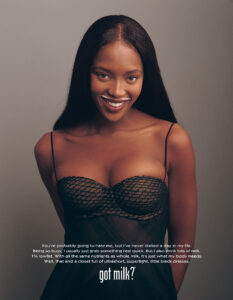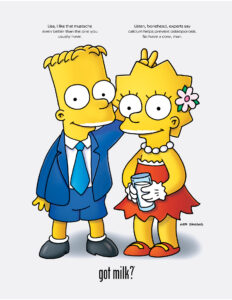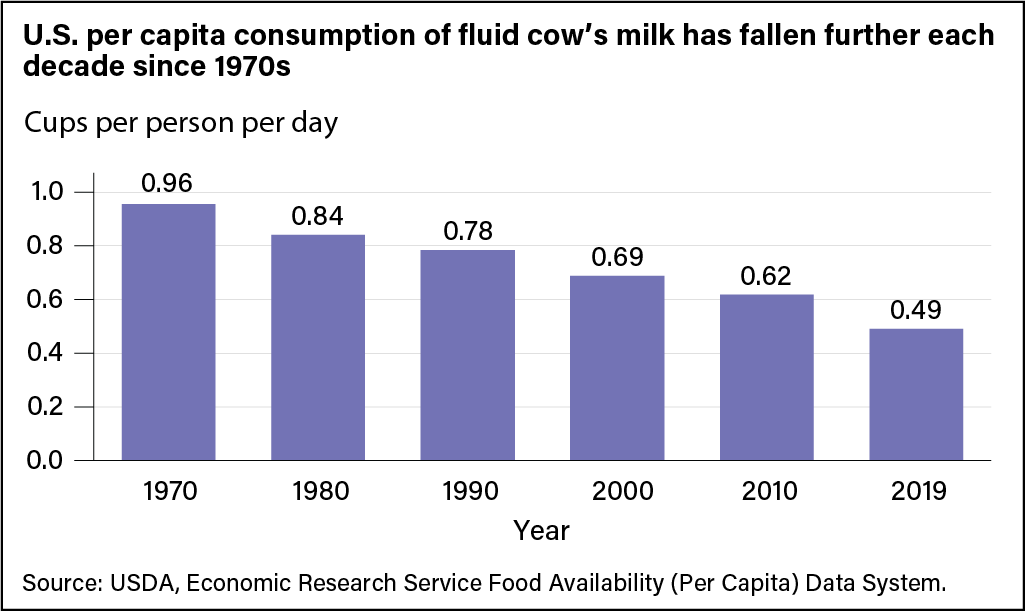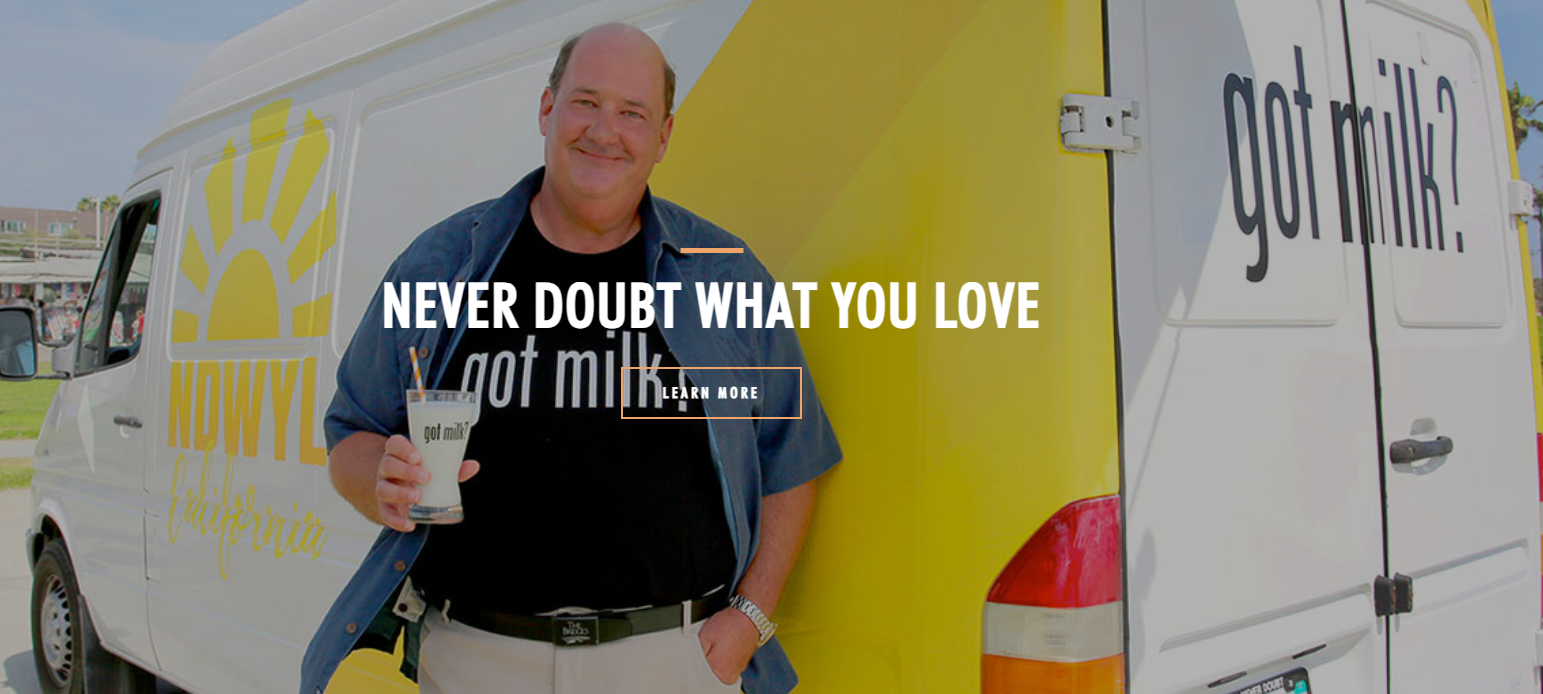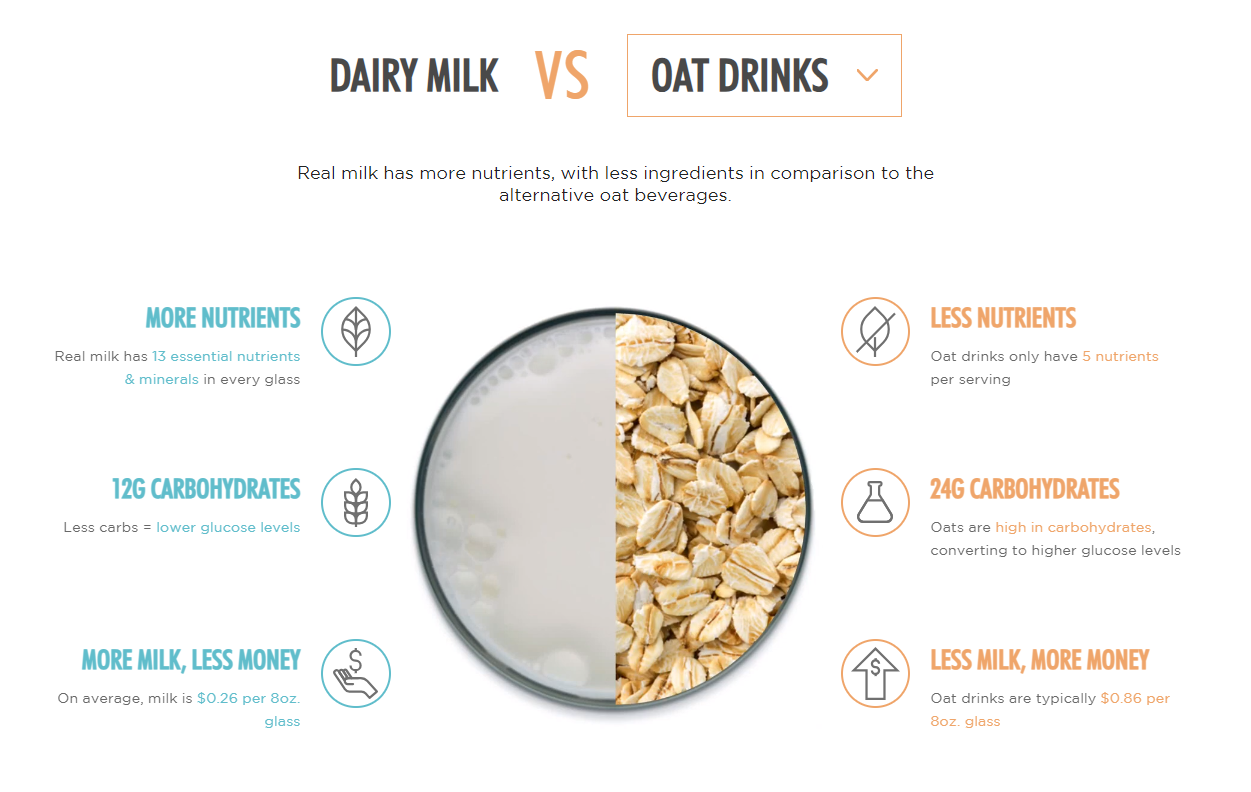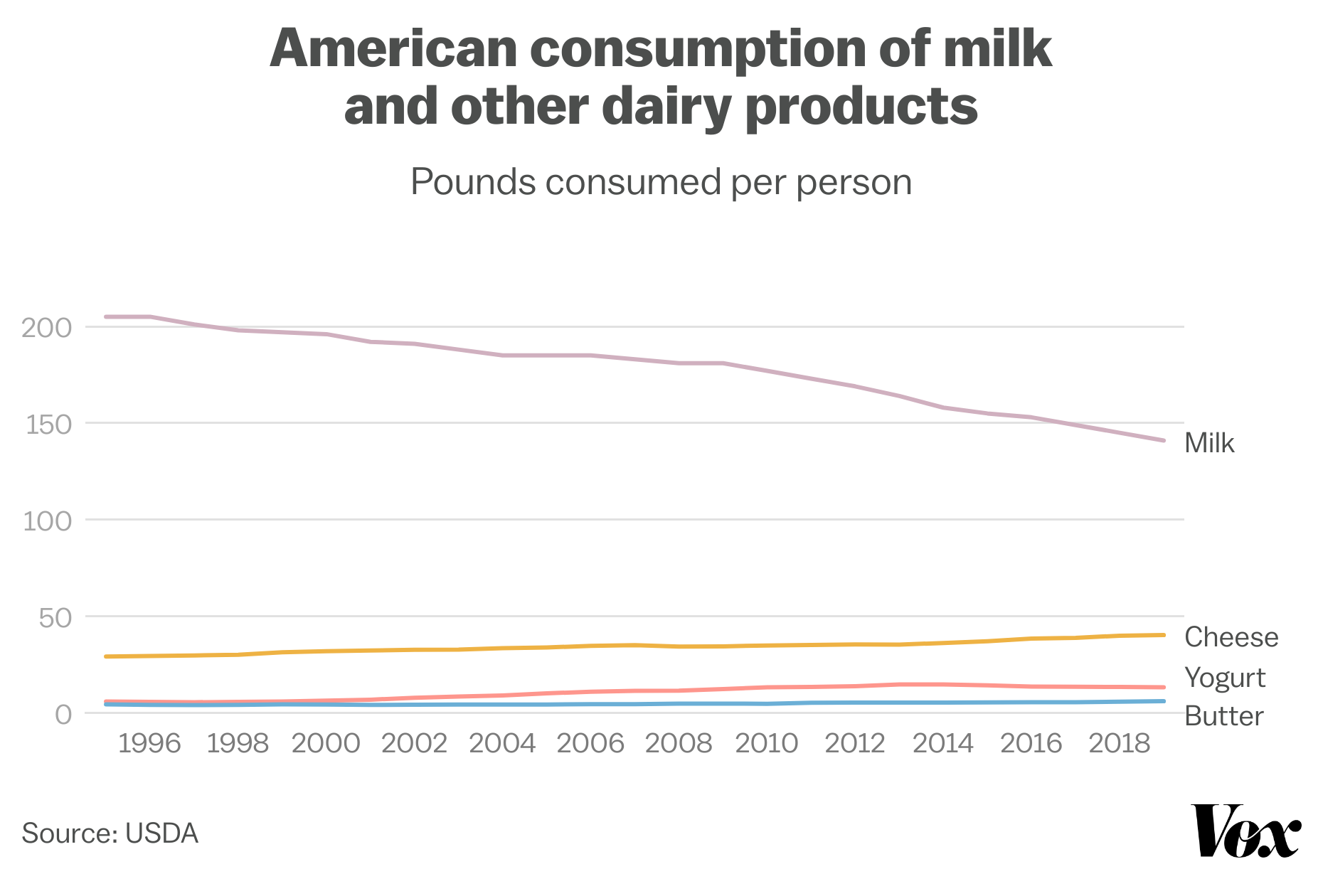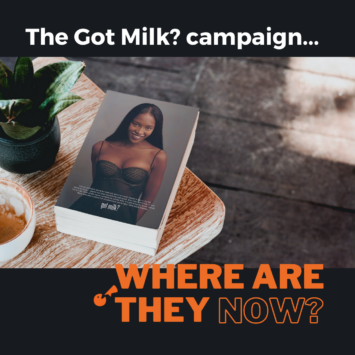
Got Milk? Where are they now?
I’ll admit it. I used to love watching “Where are they now?” shows about child actors who moved on to other careers, were in shows or movies I didn’t know about, or got “distracted” by money and fame.
This email series is a throwback to those shows and to behavior change campaigns that ran on TV and in magazines when I was a kid. Enjoy the nostalgia of old ads and the thrill of discovering where they are now!
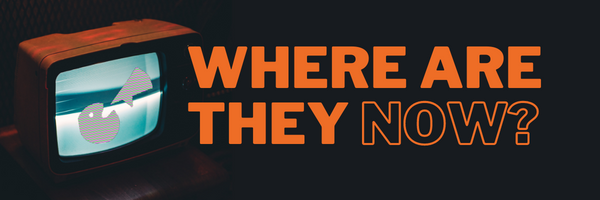
Got Milk?
Where are they now?
The Got Milk? campaign is iconic.
Print ads of celebrities donning milk mustaches and touting the health benefits of drinking milk were ripped out of magazines and hung on the walls of bedrooms and dorms.
Its popularity was akin to Absolut Vodka ads, which also claimed a lot of wall space among teenagers and young adults.
Nearly everyone knows the Got Milk? tagline, and it spawned countless copycats and spoofs: Got beer? Got faith? Got masks? I could go on…
An interesting thing about the Got Milk? campaign is that it never featured a logo or promoted a specific brand.
It’s not as if consumers were directed to Horizon Milk’s website or encouraged to choose Borden over other brands. Instead, the campaign promoted milk as a general product and drinking more milk as the desired behavior.
So, who is behind the campaign?
The very first Got Milk? ads were TV commercials produced in the early 1990s by the ad agency Goodby, Silverstein & Partners for their client, the California Milk Processor Board, which is a nonprofit marketing board funded by dairy processors and administered by the California Department of Food and Agriculture.
The California Milk Processor Board was established to reverse the trend of declining milk sales and hired Goodby to help turn things around by encouraging consumers to drink more milk.
While the initial TV commercials tapped into scarcity (i.e., how much it sucks to run out of milk when you need it), the launch of the nationwide print campaign funded by MilkPEP (the national arm of milk processors) and produced by the Bozell agency leaned heavily on celebrity influencers to make milk cool and popular.
Famed photographer Annie Leibovitz shot over 180 of the 350-plus print ads during the campaign’s 20-year duration.
No wonder so many people know the slogan – we have seen it for 20 years!!!
In essence, the Got Milk? campaign was funded and supported by state and federal agencies, dairy farmers, and dairy processors to stabilize the fluid milk industry.
Now the big question: did it work?
According to Jeff Manning, who worked for the California Milk Processor Board and was the one who hired Goodby to create the campaign, the answer is YES!
“Awareness of Got Milk? reached 90 percent in California by 1995, and massive news coverage boosted visibility nationally. The tracking study indicated that household penetration was holding steady (around 70 percent) and that people were using more milk more often.
It didn’t hurt that, in addition to sales, there were awards—crates of them. In fact, between 1994 and 2005, Got milk? won just about every coveted creative and marketing award around. It also became one of the most ripped-off lines in marketing history and clearly entered pop culture.”» Jeff Manning, Got Milk? Marketing by Association
Yet, the data tells a different story. The U.S. Department of Agriculture’s report on consumption and sales rates of fluid cow’s milk shows a consistent multi-decade decline.
Here is a milk consumption update from the USDA Economic Research Service’s June 2022 newsletter.
“Although U.S. per capita cheese and yogurt consumption has more than tripled since 1970, U.S. per capita consumption of all dairy products peaked in 1987 at 1.57 cup-equivalents per day. People drank less milk during the 1990s and 2000s, more or less offsetting increases in consumption of other dairy products.
In 2009, consumption of U.S. dairy products was 1.55 cup-equivalents per person per day. By 2019, it was 1.49 cup-equivalents, weighed down by the faster rate of declines in milk consumption.” » USDA ERS Amber Waves newsletter, June 2022.
Many factors contribute to the decline in milk consumption, from a rise in alternative milk and beverage options (including bottled water) to a decrease in cereal consumption, to a growing number of people being lactose intolerant and concerned about the dairy industry’s impact on the environment.
A lot was working against milk in the early 1990s when the campaign launched, and only more challenges have surfaced since then.
It raises the question of whether a super creative and popular advertising campaign would have ever been enough to reverse milk consumption trends.
This then raises the question of whether it was the proper behavior change goal to begin with (but try telling that to a bunch of dairy industry execs.)
Where are they now?
In short, dairy milk processor boards are angry and doubling down on advertising to avoid losing more drinkers.
Remember when I alluded to bottled water being the main factor in declining milk consumption above? In case you didn’t read the article, the second paragraph reads:
“Though we often think that plant-based beverages are to blame for this decline, the data suggest otherwise. In fact, consumers are largely substituting bottled water — not plant-based beverages — for fluid milk,” Jen Walsh, vice president of insights and strategies at Dairy Farmers of Wisconsin, said during a presentation on Jan. 22 (2020) at the Dairy Strong conference in Madison, Wis. » Mary Hookham for Dairy Business Association, Bottled water beats plant beverages in draining milk’s market share.
I wonder if any of the dairy boards were at that conference since they’ve collectively decided to make plant-based milk the enemy.
This has been compounded by the fact that the FDA decided this past March that plant-based milk (e.g., oat milk, soy milk, cashew milk, etc.) can continue to refer to their products as “milk,” much to the chagrin of dairy processors who would like the term to strictly refer to lacteal secretion from cows. Yum, she says sarcastically.
Even though MilkPEP and the California Milk Processor Board are no longer running a joint national campaign, both groups continue to utilize the “Got milk?” slogan, albeit with differing tones.
Both groups focus heavily on “real-ness” and nutritional benefits as the primary differentiators from plant-based milk. MilkPEP uses an edgier approach of poking fun at other milk with their latest commercial featuring Aubrey Plaza in a Wood Milk spoof, which may have violated federal law. Yikes.
If you feel up for watching cringe-y ads from milk processors trying to debunk misinformation and dunk on plant-based milk, gotmilk.com has you covered.
FYI, I wrote a blog previously on battling misinformation here if you’re struggling with this.
Crying over spilled milk
It’s easy to interpret these campaigns around “realness” as desperate efforts to hold onto a disappearing industry. I feel bad for dairy farmers who may not have other livelihoods to depend on and need all of us to drink more milk to keep them afloat.
But then I read data points like this.
“But dairy is far from dead: The number of dairy cows in production has increased slightly in the past decade, and they’re producing more milk — more efficiently — than ever.
This can be explained, in part, by Americans’ love for cheese; per capita cheese consumption has risen 25 percent since the early 2000s, which is one factor that has kept milk production high, since it takes nearly 10 pounds of milk to make one pound of cheese. (Butter consumption is rising even faster, and it takes more than 21 pounds of milk to make one pound of butter.)” » Kenny Torrella for Vox, Where’s the “Impossible Burger” of cheese?
It’s not clear to me why the industry wouldn’t pivot toward promoting cheese, yogurts, and butter using the “real” thing when that is where consumer preference is heading.
Ads focused on other dairy products would resonate with me personally as someone who has switched to oat milk yet has a hard time giving up dairy-based yogurt, cheese, and butter.
Maybe they still believe milk can make a comeback….
But more likely, they are falling victim to the sunk cost fallacy bias, where they can’t bear to turn away from a campaign slogan and behavior change goal they’ve spent so much time, effort, and money on.
Tough Love Takeaways
This example leaves me with a few tough-love takeaways about the behavior change campaigns we run.
1. Don’t confuse popular with impactful.
There are many metrics to consider when evaluating the success of a campaign. Reach is great. Recall is really important. Impact is critical.
2. Consumer trends help you pivot.
The previous email series on consumer trends can help you identify if your behavior change goal is swimming upstream compared to other impactful solutions. If another positive behavior is gaining momentum, you can pivot or double down. The choice is yours; the key is knowing which path you’re on.
3. Please, please, PLEASE don’t ever create a “Got [blank]?” slogan for your campaign.
Just don’t.
I recommend reading the following articles to learn more about the Got Milk? campaign:
- Saveur, Why ‘Got Milk?’ Is One of the Greatest Ad Campaigns of All Time. Despite the title, the author holds a helpful, critical perspective on the campaign.
- Fast Company, Got Milk? How the iconic campaign came to be, 25 years ago. This is more of a glowing review of the campaign.



